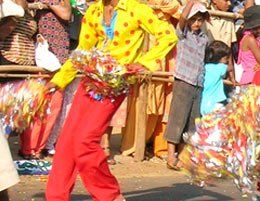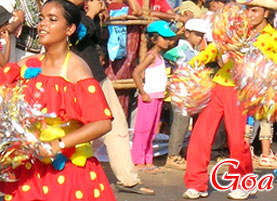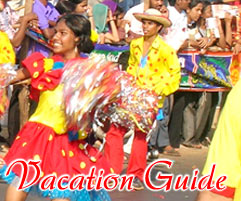Goa
has a vibrant history and is quite significant in the historical legacy
of India. The Hindu scriptures say that Goa was created when the sixth
incarnation of Lord Vishnu, known as Parashuram shot an arrow from his
bow at the sea asking it to recede. Thus, a small patch of land was
revealed after the sea receded and Goa was created. This wonderful patch
of land was beautiful to look at with swaying coconut trees, golden
sands and turquoise blue seas. This is a very common folklore associated
with the Goan history.
The history of Goa dates back to the 3rd Century BC. Goa was a part of
the Mauryan kingdom under the rule of the great emperor Ashoka. After
his death, many Hindu kingdoms like Chalukyas, Satavahanas,
Rashtrakutas, etc. took over his region and his empire was fragmented.
Goa was made a major maritime power during the empire of Kadambas in the
10th century. Their rule lasted for 300 years and Goa was their main
trade center. Goa had a turbulent phase under the rule of the Delhi
Sultanate during the year 1356. But it gained stability during the rule
of Vijayanagar kingdom that lasted for a century.
During the 15th century, the Portuguese discovered Goa when they were
busy spreading Christianity and searching for new trade routes. They
landed near Calicut in Kerala around 1498. They were unable to get a
foothold in Kerala and thus proceeded a bit towards north and captured
Goa. Within no time, they spread their rule all over Goa and established
themselves as the supreme power over the trade route of Goa near the
sea. As time passed by, Goa became the hub of Portuguese empire all over
Asia.
The capital city of the Portuguese was Old Goa which was a wealthy and
prosperous center. This attracted many Portuguese immigrants who came to
Goa and settled there. At the end of the 16th century, the population of
Goa surpassed that of Paris and London! The vast natural resources,
immense wealth and monopoly over trade routes resulted in the increase
of population and expansion of the Portuguese colony towards further
east. They even wanted a separate rule and started a movement for that.
Even after the British rule in India ended in 1947, the Portuguese held
control. Finally in 1961 a movement was started to grant Goa
independence. Finally Goa was declared a union territory administered by
central government of India on 30th May 1987. Thus Goa has a unique
amalgamation of Hindu, Muslim and Catholic cultural elements in its
tradition. Yet it has held on tightly to its own Konkani heredity and is
a thriving state today.




